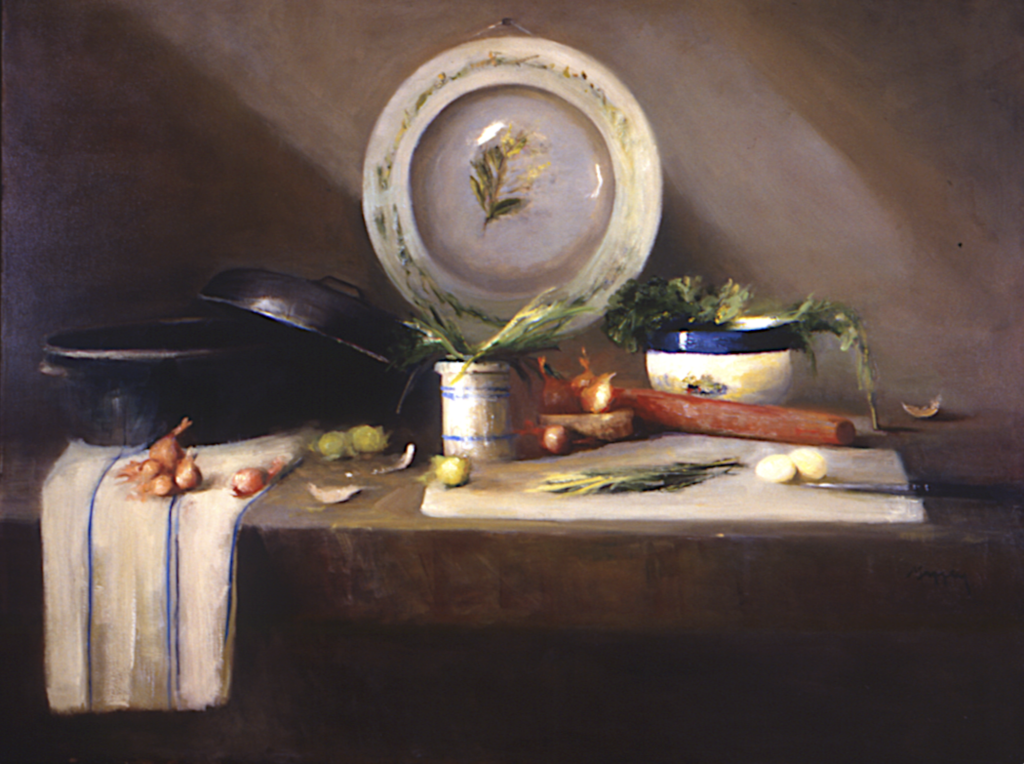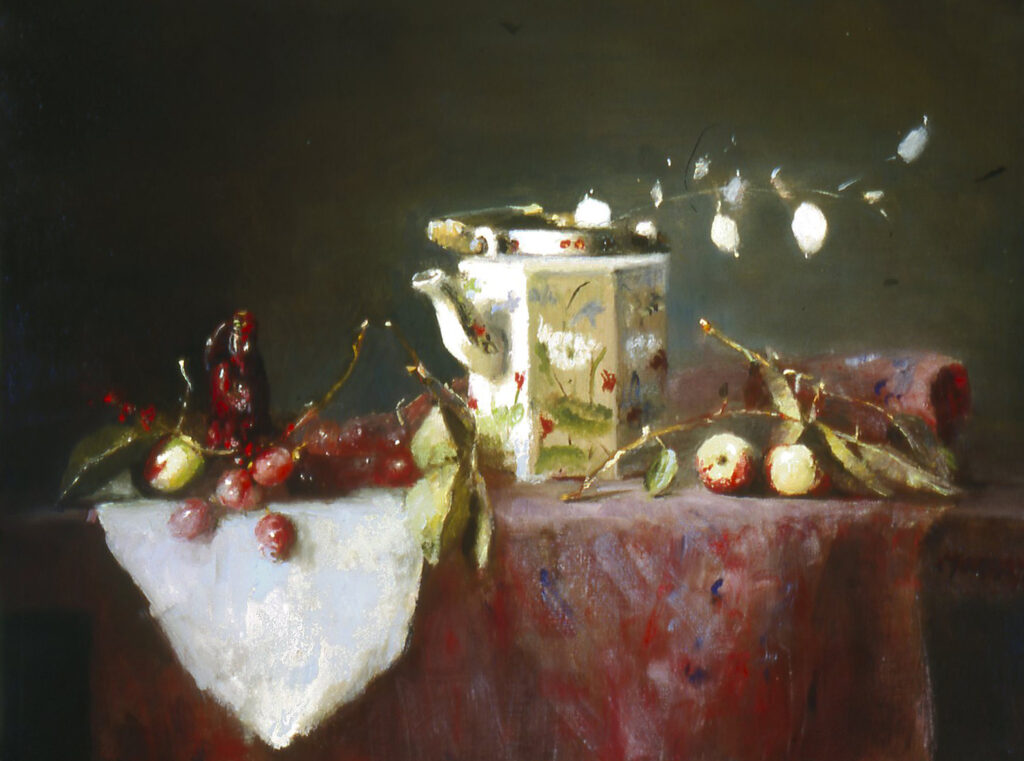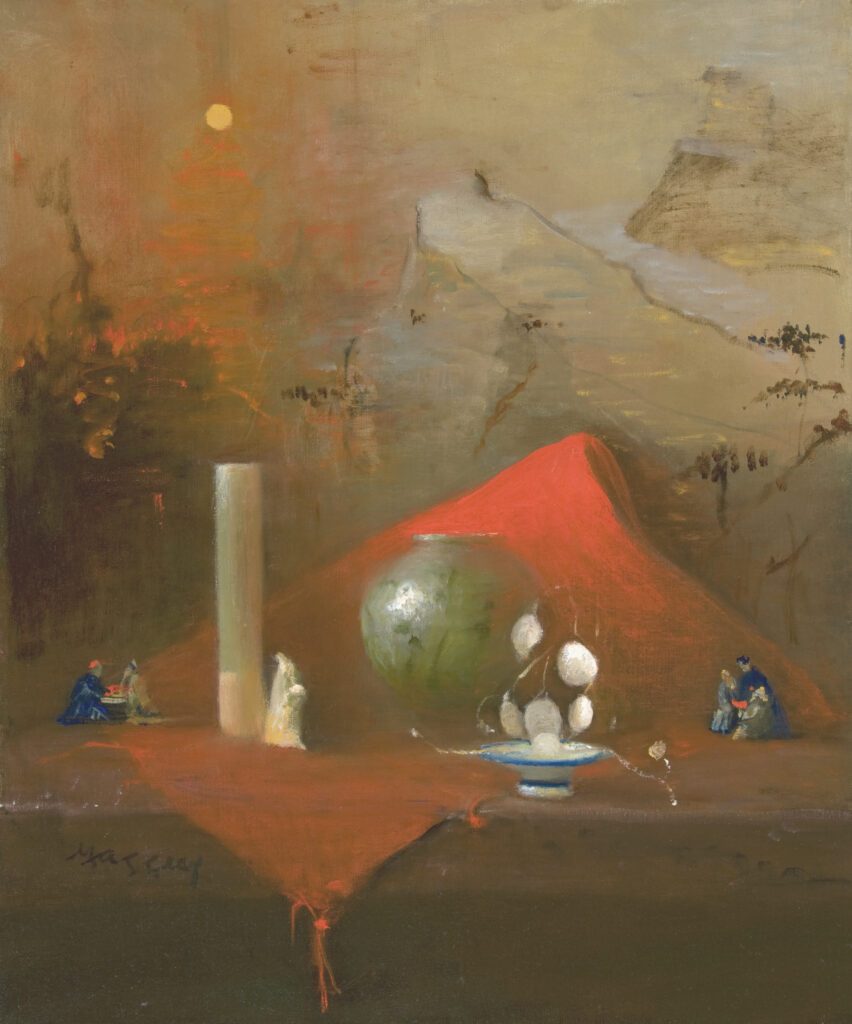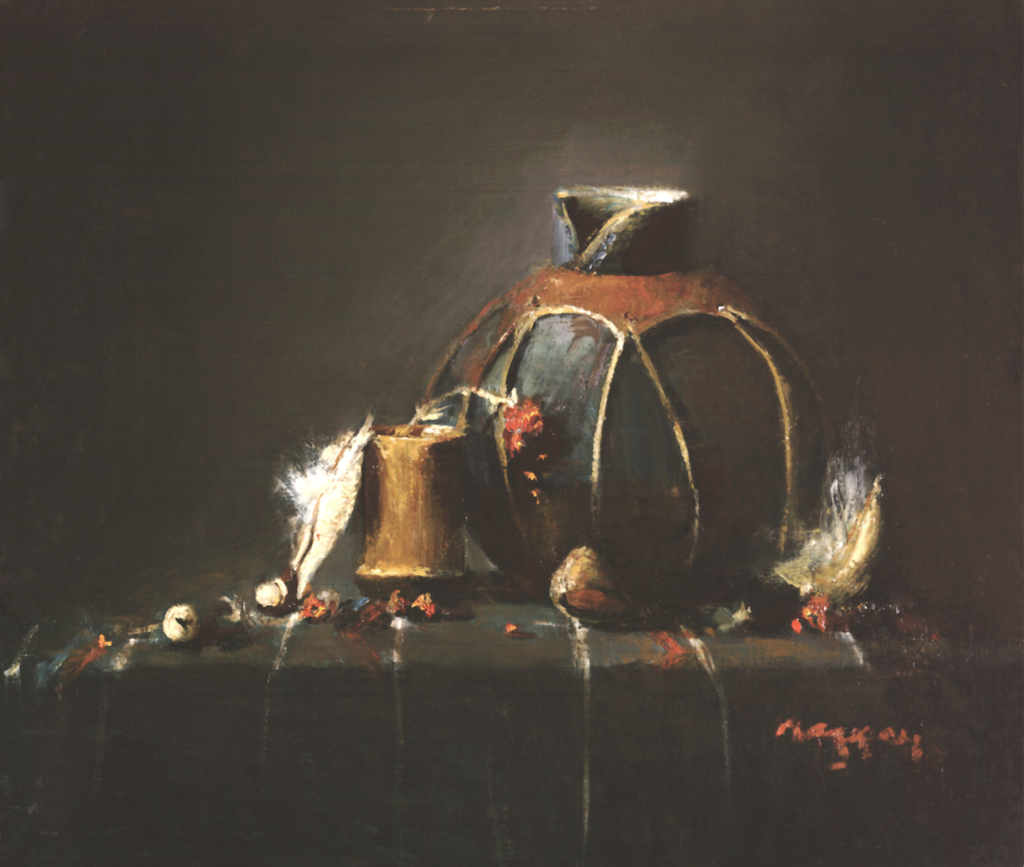
36″ x 48″ – Oil
I began to paint in 1994 at the age of 41. There was no preparation or instruction prior to that time. People often ask, “You mean you just started painting?” Yes, I just began to paint.
As I think about my journey as a painter, I find I have internally shifted. What does this mean?
It means I try to shed all external noise and forces that get in the way of the painting process. I place myself in a painting “space.” In turn, I find myself conscious during painting. I catch myself when I drift away from the work at hand. I give my full attention, as energy permits, to watching and waiting on the painting. This is what I call Intention + Concept through active awareness, or being “in the presence of the painting”.
The best painting results come about when I work with the idea of having a completed concept in my mind’s eye, without being absorbed in the details of the subject, and without unconsciously laying down paint. In other words, I strive to paint my concept while being aware of all things in front of me. I now practice painting while more conscious of the process. I am mindful of my intention. Intention and concept are co-mingled — we as painters must let the viewer know what our painting is about.

22″ x 28″ – Oil
It is a long journey to arrive at the space that allows you to be one with your picture — to let the canvas tell you what it needs, and to watch the canvas “become”. You must get out of the way while still attending to the work before you. The best thing one can do is practice while fully present to the process, and to catch yourself when internally drifting or thinking of something outside of painting. Even when you KNOW what is necessary, you may not always DO what is necessary for the good of the painting.
I find that as I age as a painter, distractions such as shows, sales, awards — all of it has fallen away. I am happy just to paint and struggle with my challenges each time I go to the easel.

28″ x 22″ – Oil
Has painting become easier? Yes and no. Getting to this point has certainly been difficult. But, I feel more at peace having entered into this present place of painting. The journey could only have happened the way it happened. Being more aware of when I am not paying attention has made painting more enjoyable, and produces a better result.
Learning to paint isn’t linear. It ebbs and flows — it feels within one’s grasp only to move or shift. You think you are practicing while awake, and then you drift. You fall asleep to your process.
I now know when I am drifting off or leaving the presence of the painting in front of me. I catch myself noodling or copying instead of watching and waiting on the picture’s concept. I catch myself…that’s the important thing.

15″ x 17″ – Oil
Anne Sullivan Jenkins says
What an amazing article! It means so much to obtain such clear information that shares my same thoughts as a painter. The “place of presence” only comes when we step out of ourself and what others have said to let the painting guide us. I read once that to “invoke a response is art” and our response rather than step by step orderly process learned is what I most strive for whether every detail is correct or not.
Thank you,
Mary K. Massey, for the lovely art and words of wisdom!!
Mary Massey says
Anne: Thank you for your note! You are well-served with the mindset of letting the painting tell you what it needs. The outside distractions I mentioned can distort and mislead the organic process. Part of realizing a good painting is just to pay attention and watch the work become.
Mary
Andrew Cenas Jackson says
A wonderful article , thank you ! I’m afraid I am not close to that yet with painting . The planning, composition, focus and then the actual process of the craft, i.e. application of paint etc. For me to try and listen to the canvas , well not at this time, but maybe. I hope you continue to paint such impressive paintings.
Andy Jackson
Mary Massey says
Hi, Andy,
Thank you for your kind note. The first two to three years of painting do seem to revolve around the things you mention. Remember, learning to painting isn’t linear. It ebbs and flows and to my way of thinking, happens slowly and incrementally. Organically. You may have a break through and then, nothing for some time. I believe that’s why we continue to challenge ourselves.
Perhaps as you paint, you might begin to be aware of when your mind wanders, or you find yourself just copying the material, rather than looking at the entire painting holistically. Watch the painting and let it tell you what it needs. Eventually, with your idea at hand, you will begin to realize when you thoughts creep in or external stuff distracts you. Said another way…when you have “left the painting.”
Keep painting. I’ve painted many ‘dogs’ to get to the better work. It’s a process and not a static endeavor.
Mary
Susan E Drennan says
Thank you for this article. I have been painting (and struggling) for a long time and have just recently begun to feel what the painting needs. I don’t want to copy. I want to create. Your article tells me I am on the right track. It also has given me insight to stay with and focus on the painting and not to drift. Thank you!
Mary Massey says
Good morning, Susan!
Yes, you are on the best path. You are the painting’s greatest asset and can assist the work to the conclusion you desire. I’m not saying it’s easy, but being aware, being awake as you work will help you remember why you chose the particular objects, figure, etc., in the first place. To make them more than what they are.
I am fond of Chardin who painted kitchen ware, fruit, and maybe a little extra something. He took these ordinary objects and elevated them, or better said, transformed them beyond their humble place in our lives. He makes us notice the beauty of a pear.
A poet who offers this same idea is Rilke, one of my favorite persons to read. He moves beyond the literal to elevate whatever he is writing about.
Keep painting, Susan. You have this pleasure for a life time. Mary
Curtis Verdun says
Very luminous work! Very nice.
So many people make comments about having a steady hand or you draw so well.
But painting is much more seeing than doing.
Mary Massey says
Hi, Curtis,
I agree with you. Seeing is the crux of painting. Space, air and light carries the work beyond the literal. Air, space and light can’t be touched with our hands like a vase of flowers. Nonetheless, we live and move through space, with air and light around us. As painters, we all must come to understand this phenomenon. Otherwise, the painting is about how well someone copies the subject which leaves the viewer with a static and lifeless picture. It also leaves the painter with no path to progress and grow.
Thinking about these intangible elements can lead a painter to incorporate them.
Happy Painting!!
Mary
Sven says
ha ha, “I catch myself” – that is a good way to see it 🙂 As an old therapist one would say “being attentive to oneself” – but I like your expression better 🙂
Thanks for yet another useful and fun input on this blogspot 🙂 Let there be many more to come 🙂